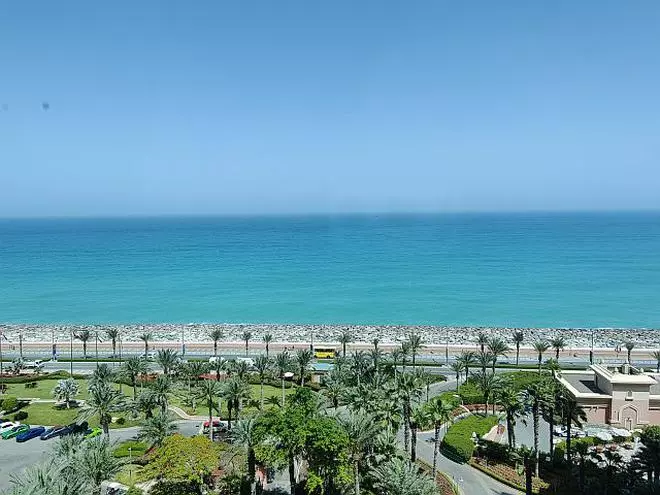Vivo reserves its X series smartphones for a special kind of person: the user who explores and uses the cameras to their fullest. Phone photography may have started out as being casual fun, but today just about everyone is a content creator either personally or professionally. Each new X series phone is meant to bring more tools for just this purpose.
My acquaintance with the X series goes back as far as the X50, which somehow took really attractive looking photographs. I remember there being a bit of a fight to use it, since everyone wanted their images to look good. With iteration the X phone has been growing up, bringing innovative camera features, both in terms of hardware and software.
Last year’s V70 Pro Plus, which was the top-ender from a series of three phones, looked rather executive, dressed in a leather-like finish, and a big camera module on the back. This time, with the X80 Pro, the leather look has only comes in with the case, but it certainly still has a big camera housing. In fact, that takes up more than one-third of the phone. Vivo calls it Ceramic Cloud Window. Many can’t get used to the size of that camera module, but me, I rather like phones that look like cameras. And besides, anything that isn’t just another glass slab is really welcome. Overall it has a nice design but if you’ve seen the X70 Plus, the two phones look similar. Three phones, if you count the base model, X80.
Bright sight
The V80 Pro comes out of an elegant square box that every bit spells flagship, unlike other premium ones that come with nothing but a phone and an apologetic cable. Here, you have a premium looking phone, a nice thick charger, a cable, Type-C earphones with extra ear-tips, a protective case and a screen protector. The case is textured and leathery looking and helps with a good grip as well as with keeping the device clean. It’s not really a particularly light phone, though, and is even a little top-heavy and unbalanced when held with one hand.
The 2K AMOLED screen is curved into the sides and has many reasons to recommend itself. It’s a standardly large screen at 6.78 inches and has excellent colours and depth — a rather good thing since your photographs and videos have to look good on this phone in any case. You have all the support you need for consuming content (or indeed, viewing your own) and goes up to a peak brightness of 1500 nits. The screen is an LTPO 3, which means it can adapt from 0Hz to 120Hz depending on what is being done. There are dual speakers to go with the vivid screen and these are not mere loudness but have some depth and fullness to them.
Power performance
The Snapdragon 8 Gen 1 5G chip powers the X80 Pro, working with 12GB of RAM and 256GB of UFS 3.1 storage. This is a very fast and fluid phone and doesn’t get any hotter than other phones using the chip and definitely less than the S22 series.The phone runs on Android 12, naturally, but on top of that is Vivo’s FunTouch OS which could do with some finessing here and there. Unforgivably however, this device comes with a nice big collection of ‘bloatware’ or unwanted apps not expected to be riding piggyback on a premium phone. While almost anyone who uses this phone will be somewhat tech savvy and will know very well how to offload these apps, it’s still an unclean feeling to see them there in the first place. Josh, DailyHunt, CRED, and a host of others immediately also start to flood you with notifications.
There’s a few interesting extras about this phone and one of them is the fingerprint scanner. It’s an under-display one and it’s unusual in that it covers a large area. You don’t have to be exact and precise, once the fingerprint is registered, and one quick press will unlock. In fact, the print takes barely one or two presses even to register. Another thing about the sensor — for double protection you can register two fingers and use that combination to unlock.
This is an IP68 rated water and dust resistant. The battery on this phone is a 4,700mAh with 80W charging. With wireless charging, it’s still fast at 50W. The battery lasts out pretty well though if one plans to use the camera heavily – which is what it’s meant for after all – you’ll need a charging strategy.
Camera-scape
The set of cameras has so many features it would take quite a while to explore. To make the best of this phone one really needs to get to know the camera app and figure out how to reach favourite features quickly rather than using it as a regular point-and-shoot. That would be a waste, considering the lengths to which Vivo has gone to bring something special to the cameras.
One of those lengths involves its ongoing partnership with optics legend Zeiss which brings in the anamorphic lens to enable, along with algorithms, cinematic video with oval bokeh. Another is an upgraded V1+ chip custom made by Vivo which works with AI to allow a one-tap scene enhancement in both photos and video, sharpening and clarifying. The Zeiss T* Coating reduces ghosting and flares.
Also on board for the 50MP primary camera is an upgraded and customised Samsung GNV 1/1.3” sensor. It has an aperture of f/1.6 and includes optical stabilisation. The ultra wide camera is a 48MP Sony 1/2.0 and f/2.2 aperture. It also has laser autofocus. It’s the 12M) 1/2.9 2x telephoto lens (Sony IMX663 with f/1.9 aperture) that gets the famous internal gimbal on this phone. There’s another 8MP 5x telephoto lens, this time with the periscope and f/3.4 aperture. It is stabilised. The front camera is a 32MP 1//2.8 with an f/2.5 aperture.

Picture shot from Vivo X80 Pro 5G camera
On the one hand, the camera setup isn’t drastically different from the X70 Plus’. On the other, there are upgrades that are compelling many to say the V80 Pro’s camera set up makes it the best on a smartphone. Certainly it is the most extensive in terms of features. Where others have barebones and simplistic camera apps with many parameters not even accessible, the V80 Pro’s app needs a tour of its own.
Results from this set of cameras are really interesting and very good. The camera has features like horizon stabilisation which keeps the video upright even when the phone is turned. Keeping a person in focus while filming is another interesting feature. Night photography is one of the best. We will look into camera features in more detail in subsequent articles.

The Vivo X80 Pro costs ₹79,999. There are those who balk at the price, but I find it no surprise as such. It’s certainly more than the₹62,690 for the X70 Pro Plus last year, but if there are innovations and prices are higher all around anyway, it’s not going to be close to that price. Also, if Vivo wants to position this phone as being in the ‘flagship’ league, it can’t under-price itself out of the category. But then it’s also true that not every brand can get away with charging high prices in the same way.
Published on
May 27, 2022

























